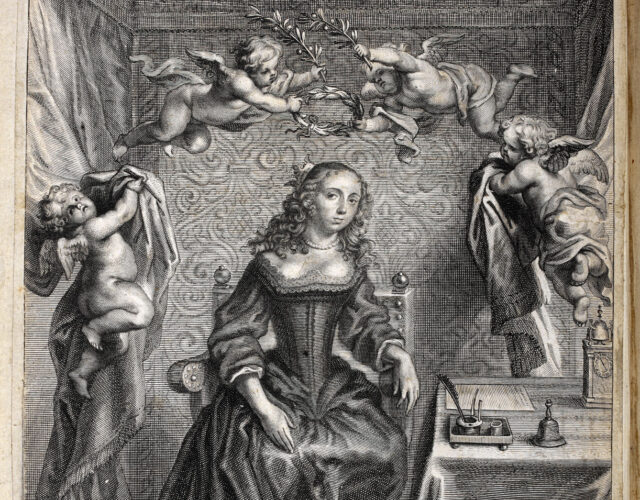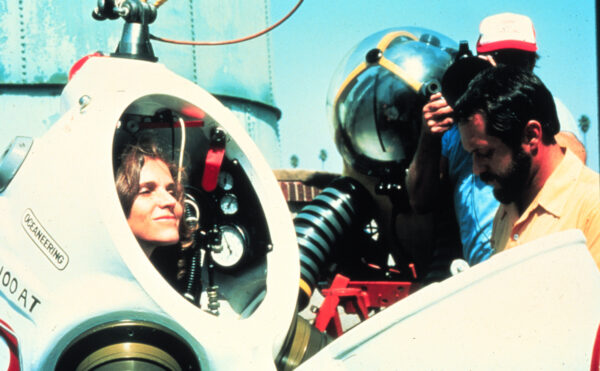On May 30, 1667, a large, black coach made its way through Hyde Park toward the home of London’s Royal Society. A crowd of spectators, including diarist Samuel Pepys and “100 boys and girls running,” thronged the path to look upon the woman carried within: the celebrated Margaret Cavendish, Duchess of Newcastle (1623–1673). “So many people may come to see her,” reported Pepys, “as if it were the Queen of Sweden.” But Cavendish was a rarity: she was a female natural philosopher—what we would today call a scientist.
Cavendish was one of the first women to write using her own name, the only woman to publish her own natural philosophy in the 17th century, and the first woman to be invited to visit the newly formed Royal Society. Her work was equally singular: through 20 volumes of plays, poems, essays, and satires Cavendish explored ideas like atomism, materialism, and animal rights, mixed with discussions on gender and etiquette. Denied formal education and a career because of her sex, Cavendish wrote as she pleased, appealing to her readers, “As for Learning, that I am not versed in it, no body, I hope, will blame me for it.” But behind the feigned simplicity was a formidable philosophical mind that rejected the new vogue of empiricism and experiment for intuition and reason.
Born Margaret Lucas, the youngest of eight children in a well-to-do Essex family, Cavendish was privately tutored as a girl—more “for formalitie than benefit,” she later observed. Her family was Royalist, and with the start of the English Civil War in 1642 Margaret was sent to live with her sister in Oxford, where the court had relocated. In 1644 she traveled farther, accompanying Queen Henrietta Maria into exile in France. She met and married the similarly exiled William Cavendish, Marquis of Newcastle, in 1645.
The wealthy Cavendishes were both patrons and practitioners of science, and it was through their connections that Margaret was exposed to scientific debate. She and William held salons in Paris that included such scientific thinkers as Thomas Hobbes, René Descartes, and atomist Pierre Gassendi. In the 1650s Cavendish was developing her own natural philosophy and published a number of short books. After the restoration of the Stuart monarchy in 1660 she and William returned to England, where Cavendish worked to refine her ideas, publishing Philosophical and Physical Opinions in 1663, Philosophical Letters in 1664, and Observations on Experimental Philosophy in 1666. In these texts Cavendish critiques the growing “new science.” Knowledge gained by experimental methods, she wrote, was not reliable and would always be tainted by the self-interest of the observer: “[Man] can not know the truth of those Infinite parts, being but a finite part itself.”
Even before her visit the Royal Society was one of Cavendish’s favorite choices for ridicule; she saw in it the epitome of the presumptuous and therefore dangerous experimenter. Characters from the Society abound in The Blazing World (1666), a satire that some consider the world’s first science-fiction novel. For its sheer imaginativeness The Blazing World has become Cavendish’s best-known work: in it a “young Lady” travels to a world joined to ours at the North Pole, where she encounters a kingdom of hybrids—“Bear-men,” “Fox-men,” “Ape-men,” and more—which she organizes into scientific societies. And while their debates and endeavors parallel 17th-century science, in The Blazing World they have Cavendish, the young lady, to guide them.
Prolix, romantic, and contradictory, Cavendish was dismissed by both her contemporaries and modern scholars as either irrelevant or insane (“Mad Madge” remains a popular epithet). Even her invitation to the Royal Society was based more on social standing than any interest the group had in her ideas. But recent biographies reveal a woman acutely aware of her outsider status. Barred from the official channels of science but possessing a powerful title, Cavendish was free to critique and focused her attacks on what she had been denied: knowledge, or, more accurately, the production of knowledge by such institutions as the Royal Society. At a time when truth was becoming something you could measure, demonstrate, and prove—for men anyway—Cavendish asked who was doing the measuring and why.




